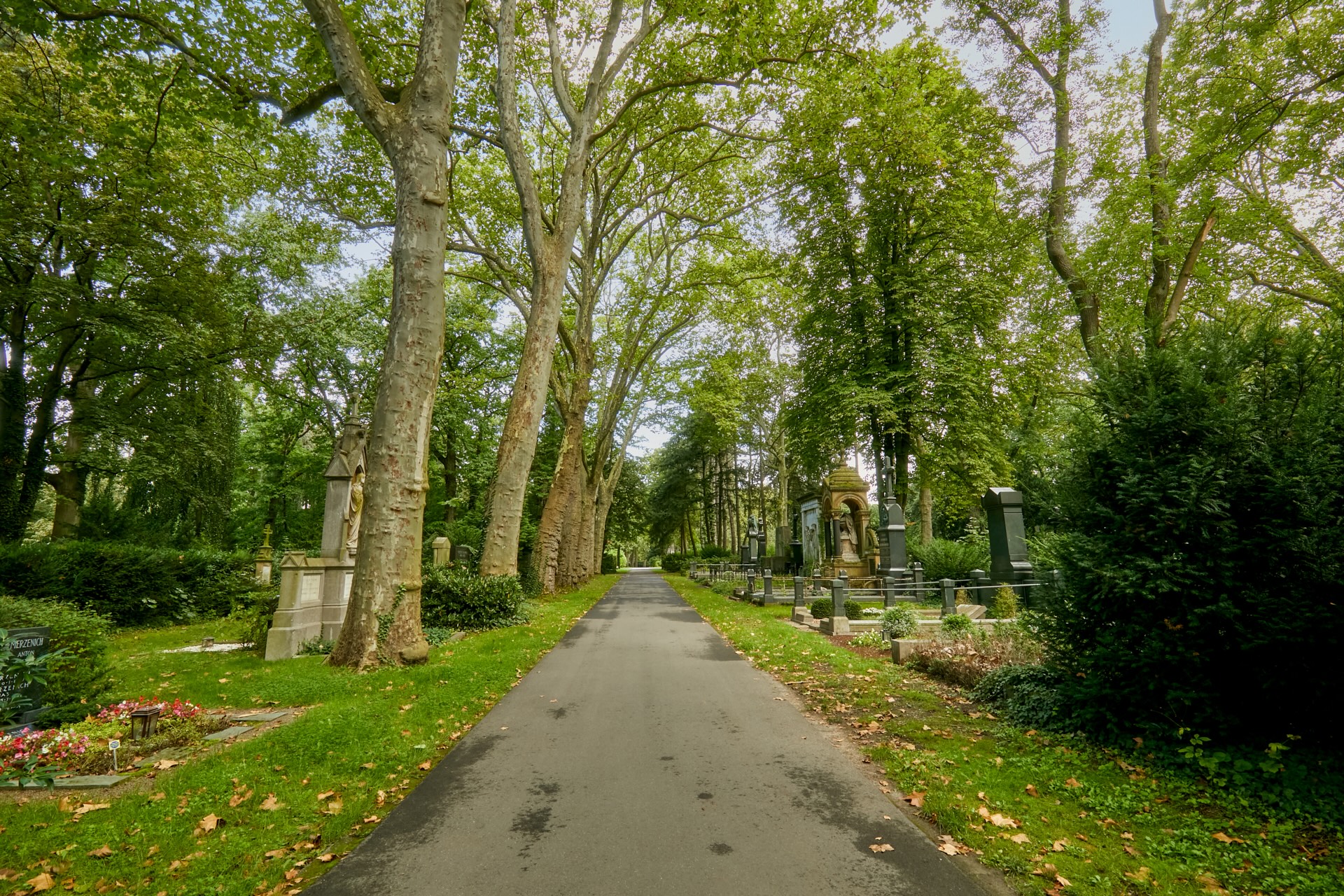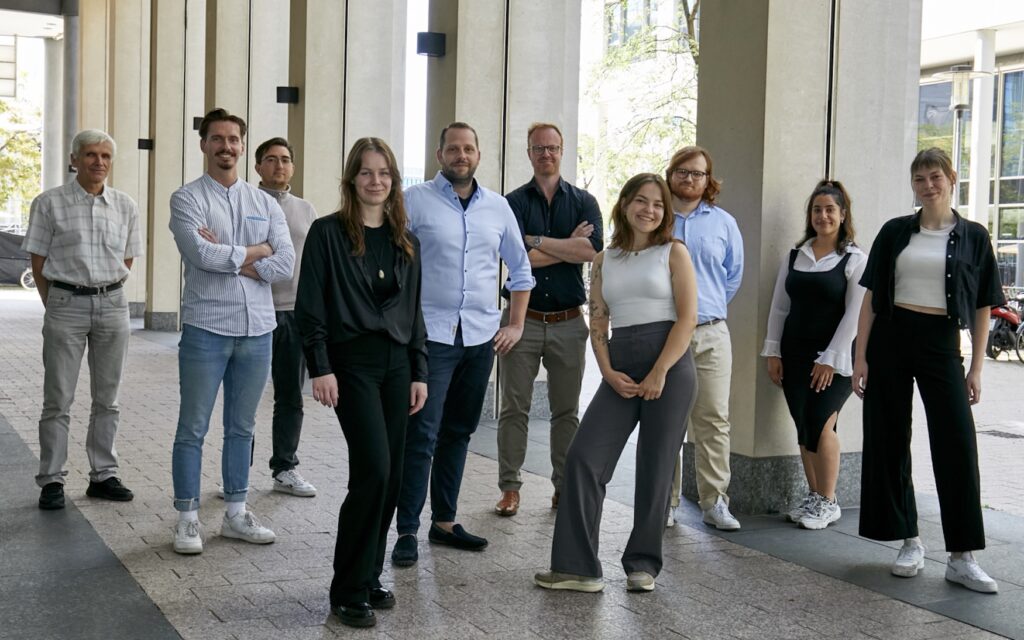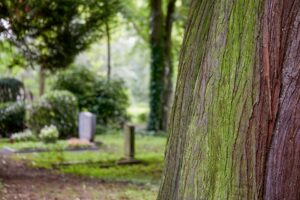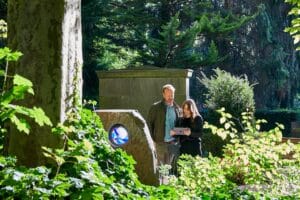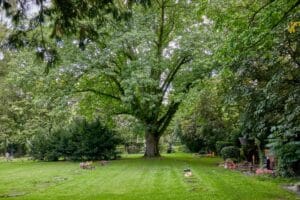It took seven years from the idea to implementation. In 2023, the Ducal Forest Administration Banz opened a natural cemetery in their forest in Altenbanz, Upper Franconia (municipality of Staffelstein). With friedhofsplan.de, this alternative burial method can be marketed effectively.
The Banz Natural Cemetery is a joint project of the Ducal Bavarian Forest Estate Banz and the city of Bad Staffelstein. It is unique in the region in this form. “The journey from the first idea to the inauguration in September 2023 took around seven years,” says Sebastian Huth, the operations manager of the Ducal Bavarian Forest Estate Banz, and his deputy Marcus Weigel. Before the first burial in the forest, not only did the cemetery regulations for the use of the Banz Natural Cemetery need to be re-established, but the cemetery fee regulations were also re-approved.
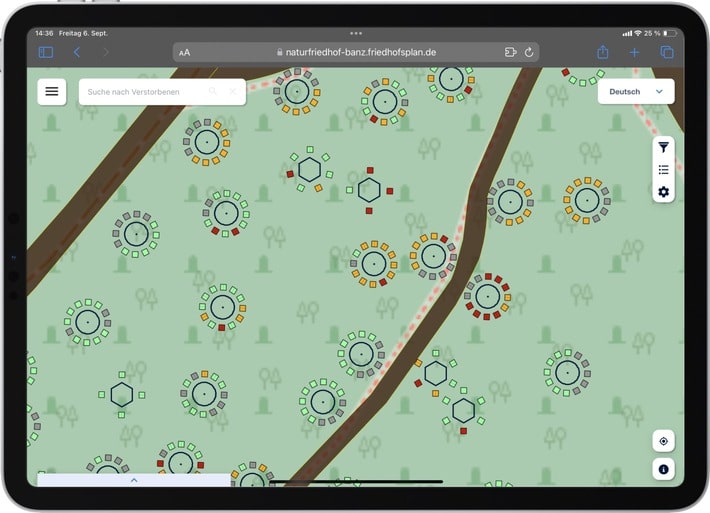
The cemetery’s operator must, by law, be a legal entity under public law, meaning a municipality or church. Thus, the city of Staffelstein became the operator of the Banz Natural Cemetery. This necessitates regular communication and coordination as part of the daily work. “Digital exchange was therefore desired from the very beginning and was urgently required,” reports Weigel. Many connections exist through the digital cemetery plan, which PBSGEO GmbH (Cologne) specifically tailored to the needs of the Banz Natural Cemetery. The digital plan is well-received not only by the operator and managing body but also by citizens.
The deceased find their final resting place surrounded by oaks and other trees (12 urns around a tree), as well as around sandstone boulders. In this way, a digital plan helps visitors navigate the vast forest area.
Currently, 2.14 hectares are actively used, with the possibility of expansion. The 2,800 burial sites available include individual graves, partner graves (two burial plots), as well as family graves. For a burial, only urns made of biodegradable materials may be used. Anonymous urn burial plots are not permitted. The names of the deceased are laser-etched on slate tablets, which are attached to small sandstone blocks on-site. These blocks stand directly on or above the burial site. The rights to use a grave can be purchased either shortly before a burial or as part of pre-planning.
The reservation fee for a family grave includes, for example, three grave reservations for up to 40 years on a tombstone (individually extendable), a minimum resting period of 20 years per burial plot (extendable), and the right to additional burial plots at the tombstone until full capacity is reached. Both the grave usage rights and the resting period of the deceased can be extended at any time and indefinitely after they expire.
“Citizen support is very easy to handle with friedhofsplan.de,” says Weigel. “Interested visitors, some of whom have already researched our offerings online at home, come to the natural cemetery and, using their smartphones, select a grave on-site, which they can then reserve with us.”
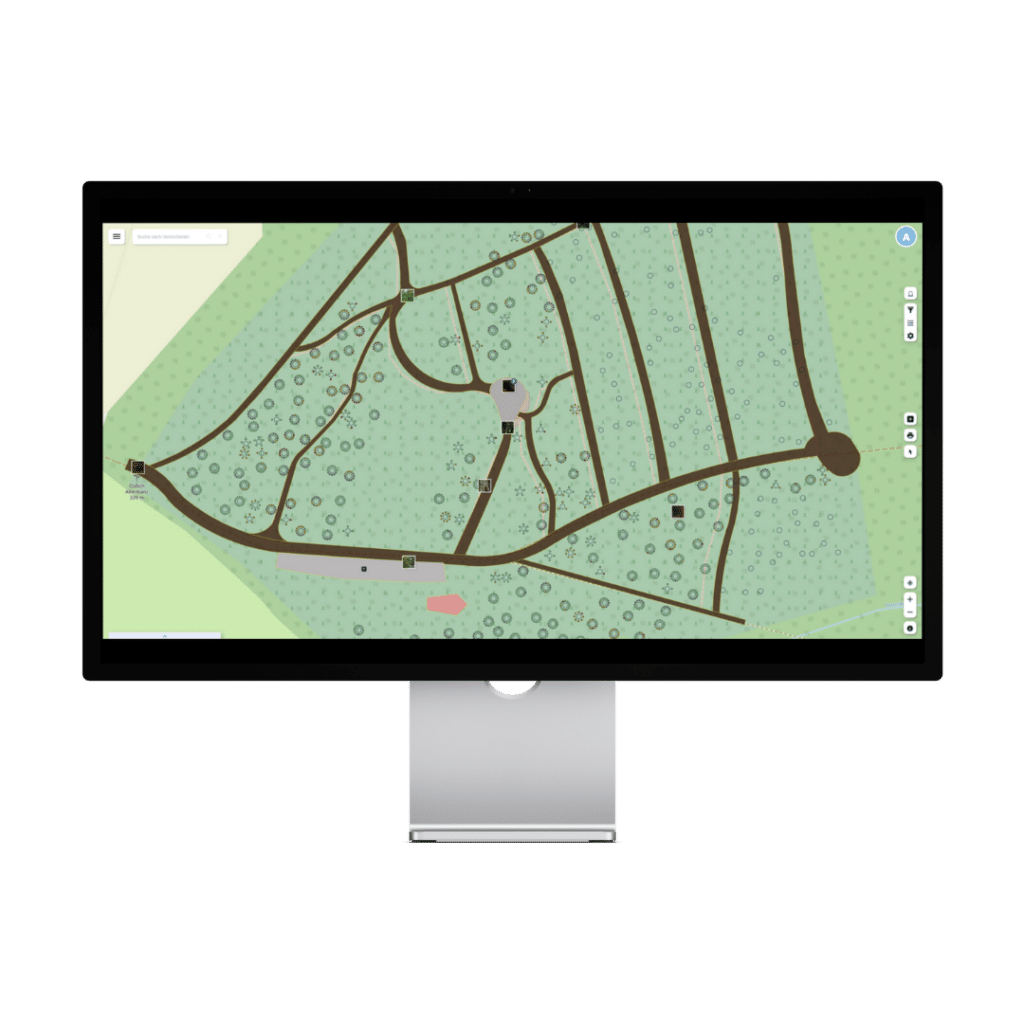
Since its opening in September 2023, more than 100 burials have been carried out. There have already been more than 200 pre-sale transactions since the beginning. The more well-known the natural cemetery becomes, the more new contracts are signed. Currently, about 60 percent of the interested parties come from the city itself and the surrounding district. The digital cemetery plan has also been online since the opening. “In the first few weeks, there were still some fine-tuning with PBSGEO regarding the networking with the city of Bad Staffelstein. But since then, the program has been running smoothly. We are very satisfied,” says Weigel. Looking ahead, Weigel sees the possibility for citizens not only to reserve a grave but also to purchase and pay for it online. However, for now, beyond providing citizen information, the focus is on networking with the city of Bad Staffelstein and the forestry department of the Ducal Forest Administration Banz.
“Thanks to the digital cemetery plan, the tasks can be distributed to the forestry staff, who work for us as service providers, wherever we are on-site,” explains Weigel the benefits. The employees can then retrieve all tasks from their smartphones. Once the work is completed, they can mark these tasks as done in the system.
Source: Friedhofskultur, oktober 2024
